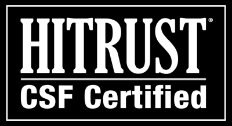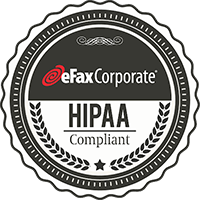Pitfalls to consider before moving your fax to a VoIP or IP-based solution
Research from IDG’s 2014 Cloud Computing Study indicates that 69% of organizations have moved at least one application or infrastructure component to the cloud. So you are not alone if your organization has already or plans to migrate to hosted services in the cloud next year. Businesses have found success in the cloud model – cost savings, scalability, productivity and a reduced IT burden – to name just a few.
However, when it comes to consolidating all data and telecommunications to an IP-based solution such as VoIP, fax is often overlooked. This can cause some serious pain points for IT management downstream as fax is often ‘thrown in’ as part of a vendor’s offering but is not actually natively designed for an IP infrastructure – remember fax technology preceded IP! IT management is well advised to consider doing serious due diligence before moving to an IP based solution – as your department will be the team held responsible post migration to triage any fax problems, compliance and feature issues should things go awry. You should consider at least the following issues with any potential VoIP vendor or FoIP solution, particularly if your business is in a highly regulated industry such as healthcare, finance or legal.
Technical Incompatibility:
- Protocol Interopability. Because fax operates primary on the T.30 protocol (which doesn’t support faxing over IP) or the somewhat newer T.38 protocol (which does, albeit by brute force), problems can arise with Interopability. Hundreds of millions of fax machines in use today still use only the T.30 protocol, requiring translations to occur between protocols in the FoIP provider’s network. This can cause delays in delivery and ultimately cause fax transmissions to fail.
- Timing delays. Moving from a voice optimized, highly standardized, PSTN to a potentially lossy and less time sensitive IP network can introduce various types of delays – jitter, network delays and protocol-conversion – all of which collectively can cause a fax to fail at the receiving end.
- Packet loss. While packet loss during a VoIP conference call may simply result in a speaker’s voice cutting out or being less audible, the same packet loss during a fax transmission – even a 1% loss – can cause the entire fax to fail.
- Modifications to your existing network. Will the vendor require changes to your existing firewall to support the Quality of Service (QoS) needed by fax? Will your on premise hardware, like firewalls, be able to manage the required interoperability out of the box? Is your network today just data and thus SIP may be a challenge? How will the fax connection be tested for quality before you buy? Will new servers be required?
Functional Inferiority:
- Features.nbsp;While moving to an IP based infrastructure makes obvious sense for services like voice, data and messaging, fax may be a slightly different dynamic. Moving to an IP infrasturtue is a great idea for reasons of consolidation and bandwidth optimization, however, given the idiosyncrasies of fax, it and the vendor you rely on need to be evaluated against its unique needs. Some vendors understand these complications; others just assume it is just another analog line to add to the VoIP. The latter is simply not true. IT management should consider a needs analysis of how users utilize fax, determine which features are mission-critical, and compare those to the potential new vendor’s capabilities. A few examples that your organization might require, and which may be limited or unavailable if moving to a new provider are:
- Ability to scale and add fax numbers on the fly, without additional server investment
- Mobile faxing
- Online storage and retrieval of all faxed documents
- Secure transmission using TLS encryption with AES-256 bit encryption of stored data
- Confirmation of fax receipts (not available with T.37 protocol) for audit and compliance
- API support for enterprises
- SAP or EMR (Electronic Medical Record) system integration
- Digital signature, annotation and send with BYOD devices
In summary, thoughtful due diligence is a wise investment before moving fax to an IP-based solution given that IT will be the recipients of complaints and tapped to fix any technical or feature deficiencies post-migration. As it likely will not make economic sense to continue to maintain physical fax servers or fax infrastructure, a better solution may be to source your faxing to a robusteFax Corporate® would be glad to help you with this process, including the porting of your existing fax numbers to the cloud.











